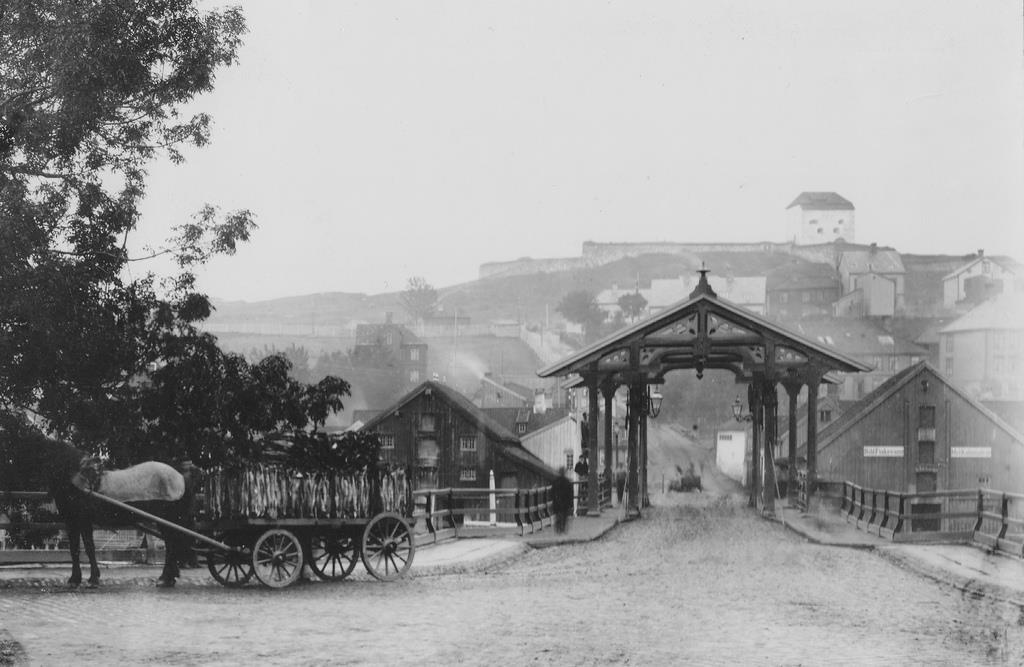Trondheim was founded in 997. The Lade earls were already at the seat of power east of Nidaros. Olav Tryggvason established a trading center and built a royal residence on Kaupangen, west of Nidaros. The city became important under Olav Haraldsson. After the battle at Stiklestad in 1030, Olaf's remains were moved to Trondheim. When Olav became canonized Olav the Holy, the building of the cathedral Nidarosdomen began and Trondheim became a royal seat of power.
In 1152, The archbishop was seated in Trondheim with 10 bishops under him. The archbishopric collected income in butter, grain, flour and fish from northern Norway. This formed the basis for real estate construction and trade. Great growth and prosperity marked the city in the period 1250-1350. At this time the city had a population of about 3000.
The crisis in the late Middle Ages significantly weakened the income base, and Trondheim became a poor provincial city. It was at is weakest during the Reformation in 1537 when the archbishopric disappeared, and the estate was placed under the crown.
In the 17th century the city grew again, through timber trade with the Netherlands and herring fishing. Trondheim had a salt monopoly and was able to control the production and sale of herring. The mining operations at Røros, Kvikne and Løkken resulted in shipping and trading. The population grew again and in 1680 reached about 5,000 inhabitants. Tradesmen from Flensburg, who established themselves in the 1600s and 1700s, dominated the trade industry. A big fire in 1681 led to Cicignons’ plan with straight streets. The growth continued in the 1700s.
In the 19th century a strong class distinction reigned: The trade patriarchy lived in Søgaden. They were large merchants and merchant families (often with foreign origin),who functioned as the aristocracy. In Munkegata foreign officials resided. The locals were mostly craftsmen and workers.
In the 19th century industrialization, old industries suffered major difficulties, but came back strongly. Exports also had a significant decline. In the coming period Trondheim grew again, this time as communication center for the region Middle- and North Norway . The trade patriarchy lost some power and was taken over by importers and wholesalers, manufacturers and traders. It was during this period that Bernhd. Brekke AS was founded.



